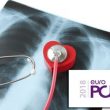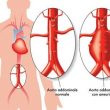This study aimed to assess the outcome of Culotte stenting with newer-generation drug-eluting stents (DES) in Medina 1, 1, 1 bifurcation lesions. The 2nd-generation device used was permanent-polymer everolimus-eluting stent Xience, a device for which there is comparatively plenty of evidence available. Alternatively, the 3rd-generation stent used was thin-strut abluminal bioresorbable-polymer everolimus-eluting stent SYNERGY. Patients with...
EuroPCR 2018 | OxAMI-PICSO: Coronary Sinus Occlusion, Improving Microvascular Function and Reducing Infarct Size
The index of microcirculatory resistance might guide therapy and controlled intermittent coronary sinus occlusions, improve microvascular function, and reduce infarct size. This study included patients with prior ST-segment elevation myocardial infarction treated with primary angioplasty. Researchers measured the index of microcirculatory resistance before stenting and intermittent coronary sinus occlusion was used if the result was...
EuroPCR 2018 | SEMPER-FI: The Reemergence of the Intra-Aortic Balloon Counterpulsation
The intra-aortic balloon counterpulsation affects patients through a combination of coronary flow improvement and afterload reduction. It has been the subject matter of several studies, but its benefit as mechanical support has not been proven. This work aims to prove the benefits of balloon counterpulsation in patients with ST-segment elevation acute myocardial infarction who, after...
EuroPCR 2018 | DESSOLV III: Bioabsorbable vs. Durable Polymer at 2 Years
Most drug-eluting stents are coated by a polymer that is used to contain the antiproliferative drug. Once the drug is released, the polymer remains in place and its presence has been associated with inflammation, restenosis, and neoatherosclerosis. The MiStent device features a polymer that becomes bioabsorbable once the drug has been released, which could, theoretically,...
EuroPCR 2018 | Swedish Registry on the SYNERGY DES: tested in primary PCI for the first time
The study included 36292 consecutive patients undergoing acute myocardial infarction receiving PCI with the new generation stent SYNERGY (thin struts, bioresorbable polymer and everolimus eluting); 39.7% presented ST elevation MI. Kaplan-Meier curves at 2 years of patients receiving the SYNERGY vs patients receiving other drug eluting stents resulted very similar for thrombosis (0,69% vs 0,81%,...
EuroPCR 2018 | Compare-Acute: FFR or Primary Angioplasty at a 2-Year Follow-Up After Complete Revascularization
Recent studies in patients undergoing acute myocardial infarction showed that a complete revascularization strategy in an acute or subacute setting, whether it be guided through angiography (PRAMI, CvLPRIT) or fractional flow reserve (FFR) (PRIMULTI, COMPARE-ACUTE), improves the combined endpoint of major adverse cardiac events (MACE) when compared with treatment of the culprit artery only. Based...
EuroPCR 2018 | FAME 2: FFR Shows 5-Year Benefit for Hard Endpoints
After a 5-year follow-up, and for the first time, functional assessment with fractional flow reserve (FFR) showed clear benefit for a hard endpoint: acute myocardial infarction. Use of FFR in patients with stable coronary artery disease so as to identify hemodynamically significant lesions in order to restrict angioplasty treatment to them has long-term benefits compared...
Post EVAR Contrast Enhanced Ultrasound Based Follow Up Reduces CT by 90%. Is It Safe Though?
This four-year retrospective analyzis has shown that contrast enhanced ultrasound based follow up protocol post endovascular aortic repair is safe and effective. Aneurysm related mortality, reintervention rate, sac retraction and endoleak detection resulted similar to that of CT based follow up protocols. In this study, doppler and enhanced contrast ultrasound were the main follow up...
Risk of Colonic Ischemia after Abdominal Aortic Aneurysm Repair
This is the largest and most recent analyzis to show colonic ischemia is more frequent after open abdominal aortic aneurysm repair (2.1% a 3.6%), compared against endovascular repair (0.5% a 1%), especially in elective patients. Most cases presented within the first 7 days. The evidence is not enough to determine the cause behind the different...
Restenosis Does Not Seem as Benign as We Thought
Elective, uncomplicated repeat revascularization after stent restenosis is associated with higher mortality rates according to a new meta-analysis that will be published soon in J Am Coll Cardiol Intrv. Historically, interventional cardiologists have seen target lesion revascularization (TLR) as a procedure that “unjustly” increased combined events in clinical studies and our own databases, thus representing...









